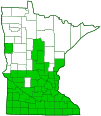differential grasshopper
(Melanoplus differentialis)
Conservation • Description • Habitat • Ecology • Distribution • Taxonomy
Conservation Status |
|
|||||||
| IUCN Red List | not listed |
|||||||
| NatureServe | N5 - Secure |
|||||||
| Minnesota | not listed |
|||||||
Description |
||
Differential grasshopper is a common, large, long-winged, spur-throated, short-horned grasshopper. It occurs across the United States east of the Rocky Mountains, and in California, Mexico, and Ontario Canada. It is common in the southern half of Minnesota, where it is at the northern extent of its range. The male is 1⅛″ to 1 7⁄16″ (28 to 37 mm) in length and yellowish-brown or army green. The female is larger, 1⅜″ to 2″ (34 to 50 mm) in length. There are no pale stripes on the upper (dorsal) part of the pronotum. On the sides of the pronotum there are 3 narrow, black, vertical grooves. There is a distinct, spiny bump (spur) at the base of the neck, between the base of the forelegs. The antennae are usually yellow, sometimes reddish-yellow, and are no more than ½ the length of the body. The pair of long appendages on the last abdominal segment (cerci) are boot-shaped with a heel, but this is not visible without a hand lens. On the middle pair of legs, the foot (tarsus) is divided into two segments. On the hind pair of legs, the narrow upper portion (the outer face) of the hind third leg segment (femur) is yellow. The narrow lower portion (the inner face) of the hind femur is yellow. The middle portion of the femur, the broad area between the outer face and inner face, is grooved in a distinct, black, herringbone pattern.The fourth segment (tibia) of the hind leg is yellow with black, tooth-like spines. The remaining tibia are yellowish. The wings are long, projecting beyond the tip of the abdomen when at rest. |
||
Size |
||
Female: 1⅜″ to 2″ (34 to 50 mm) Male: 1⅛″ to 1 7⁄16″ (28 to 37 mm) |
||
Similar Species |
||
Habitat |
||
Low, moist areas, crop borders, roadsides. |
||
Ecology |
||
Season |
||
July to October. One generation. |
||
Behavior |
||
Differential grasshopper is a strong flier. |
||
Life Cycle |
||
The female thrusts her ovipositor into sod or rank vegetation and deposits a pod containing 45 to 194 eggs. The pods are curved and are about 1½″ long and ¼″ in diameter. She continues depositing egg pods, ultimately laying up to 600 or more eggs. The eggs hatch in the late spring when plants are green, most over a period of about 14 days. The nymphs mature into adults in about 32 days. Nymphal development is well synchronized, and most transform into adults in just a few days. |
||
Nymph Food |
||
Shoots and other easily digested parts of the same plants that adults feed on. |
||
Adult Food |
||
Forbs and grasses, especially plants in the Aster family (Asteraceae), including giant ragweed, common sunflower, and prickly lettuce. |
||
Distribution |
||||
|
Sources Haarstad, J. 1990. The Acrididae of Minnesota. Final report submitted to the Minnesota Department of Natural Resources. 28 pp. |
|||
| 8/1/2023 | ||||
Occurrence |
||||
Common. Significant crop pest. |
||||
Taxonomy |
|||
Order |
Orthoptera (grasshoppers, crickets, and katydids) | ||
Suborder |
Caelifera (grasshoppers, locusts, and allies) | ||
| Infraorder | Acrididea (grasshoppers) | ||
Superfamily |
Acridoidea (short-horned grasshoppers and locusts) | ||
Family |
Acrididae (short-horned grasshoppers) | ||
Subfamily |
Melanoplinae (spur-throated grasshoppers) | ||
| Tribe | Melanoplini | ||
Genus |
Melanoplus (North American spur-throated grasshoppers) | ||
Subordinate Taxa |
|||
differential grasshopper (Melanoplus differentialis differentialis) differential grasshopper (Melanoplus differentialis nigricans) |
|||
Synonyms |
|||
|
|||
Common Names |
|||
differential grasshopper |
|||
Glossary
Femur
In insects, the largest, most robust segment of the leg, coming immediately before the tibia. In humans, the thigh bone.
Pronotum
The exoskeletal plate on the upper side of the first segment of the thorax of an insect.
Tibia
The fourth segment of an insect leg, after the femur and before the tarsus (foot). The fifth segment of a spider leg or palp. Plural: tibiae.
Visitor Photos |
|||||
Share your photo of this insect. |
|||||
| This button not working for you? Simply email us at info@MinnesotaSeasons.com. Attach one or more photos and, if you like, a caption. |
|||||
Margot Diaz |
|||||
Jumped right at my face after I took this shot |
|||||
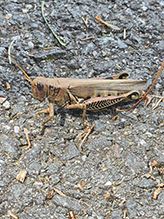 |
|||||
Michael B |
|||||
Was large, almost 2 inch. Probably common but I haven't ever noticed one before. |
|||||
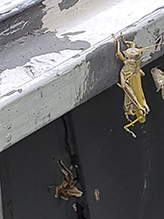 |
|||||
Alfredo Colon |
|||||
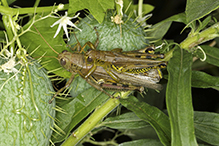 |
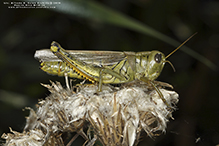 |
||||
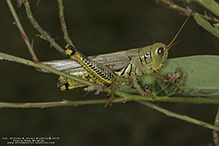 |
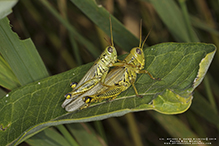 |
||||
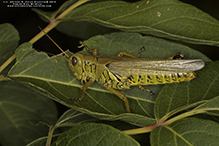 |
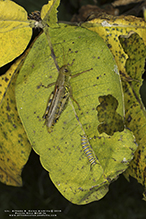 |
||||
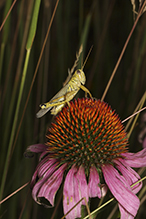 |
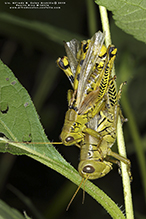 |
||||
Margot Avey |
|||||
| This photo was taken in my neighbors back yard in St Louis Park, MN. Have never seen anything like it. | 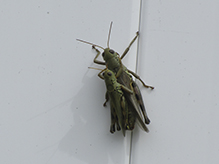 |
||||
MinnesotaSeasons.com Photos |
|||||
Female |
|||||
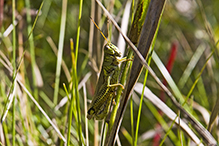 |
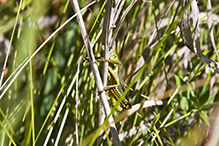 |
||||
Male and Female |
|||||
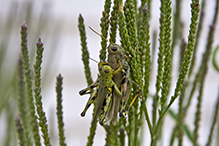 |
|||||

Visitor Videos |
|||
Share your video of this insect. |
|||
| This button not working for you? Simply email us at info@MinnesotaSeasons.com. Attach a video, a YouTube link, or a cloud storage link. |
|||
Other Videos |
|||
| Differential Grasshopper (Melanoplus differentialis) David Podgor |
|||
About
Published on Aug 23, 2012 Differential grasshopper also known as Melanoplus differentialis, found in Montgomery Village, Maryland in August 2012. For more information on this species, go to: http://en.wikipedia.org/wiki/Differential_grasshopper |
|||
| Differential Grasshopper curiosity Carol Snow Milne |
|||
About
Published on Aug 21, 2013 Large 1.50 inch long Melanoplus differentialis grasshopper is curious about my ruler and likes to bite it and is uncertain how to walk on this unusual new shiny slippery surface. Eastern Pennsylvania. |
|||


Last Updated:
